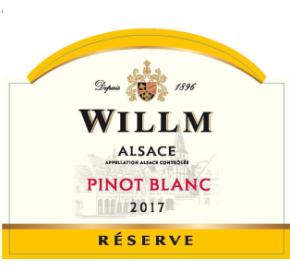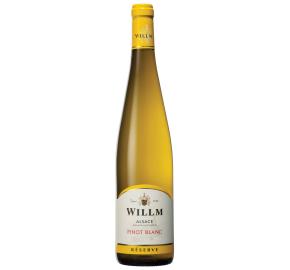Alsace Willm - Pinot Blanc - Reserve 2022
- Producer Maison Willm
- Blend 100% Pinot Blanc
- Country France
- Region Alsace Region
- Appellation Alsace
- UPC 8 19243 00113 8
Winery Technical Data
- 100% Hand harvesting
- Extended and soft pressing
- 4-6 weeks controlled fermentation in stainless steel
- Maturing on the fine lees for another 2 to 3 months
- Alcohol: 12.3% vol.
- Residual sugar: 6.5 g/l
- Total Acidity: 3.24g/l
- Aging potential: Enjoy it now or keep it up to 5 years.
- Extended and soft pressing
- 4-6 weeks controlled fermentation in stainless steel
- Maturing on the fine lees for another 2 to 3 months
- Alcohol: 12.3% vol.
- Residual sugar: 6.5 g/l
- Total Acidity: 3.24g/l
- Aging potential: Enjoy it now or keep it up to 5 years.
Estate
In 1896 the Willm family founded the Willm Estate in Barr, at the foot of the majestic Kirchberg de Barr Grand Cru vineyard. Willm has always been concerned with revealing the best of its terroirs and sharing its exceptional wines with the whole world. Thanks to the adventurous founder Emile WILLM, the estate’s wines were the first from Alsace to be exported to the United States in the early 1930s, after prohibition laws were lifted. Their wines are celebrated for their blend freshness, minerality and elegance; they are synonymous with tradition, terroir, purity and refinement.
Food pairing
This wine pairs well with Seafood, fish, white meat, savory pies, meat pies, vegetable tian, asparagus, cheese soufflés, cream cheese.
Tasting notes
A pale yellow with a fresh and floral nose reminiscent of elderflower; notes of gooseberries. The attack is supple. Fresh, dry and easy to drink, it goes well with Alsatian specialties (tarte flambée, charcuterie).
Vineyard
The Willm vineyard is located in the Barr region of northern Alsace at an altitude of 200-400 meters, extending from the mountainous base of the Vosges to the plains of Alsace and the Rhine. Bordered by the Vosges Mountains to the west, the Barr hillsides benefit from a dry and sunny microclimate thanks to their south-southeast exposure, optimal for cultivating the vines. The fluctuation between warm days and cool nights in autumn is conducive to a slow, prolonged grape maturation.
Our diverse soils are a product of the region’s diverse landscape. The mountainous Vosges make way for smaller hills which stretch into various flatlands—just a few of about a dozen geological formations that comprise our region’s landscape. The vineyard itself consists primarily of granite and clay-limestone soils, while the coastal marine environment contributes to the terroir’s mineral-rich quality.


